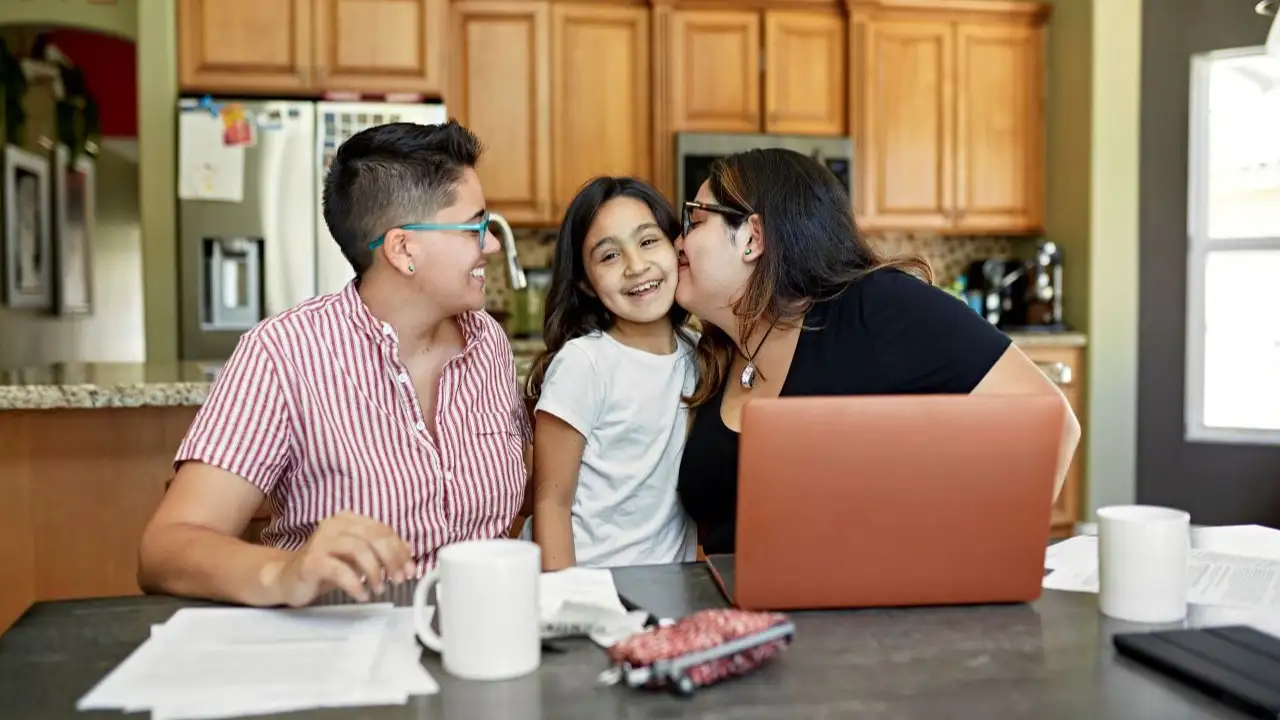
Money Tips & Education
How to budget like a boss: 5 steps
Nov 06, 2023
Written by
Reviewed by
Key takeaways:
Your budget is your plan for spending and saving to reach your goals.
Your budget should reflect what’s most (and least) important to you—not someone else’s rules.
Budgeting isn't one-and-done. You’ll also learn to track spending and adjust when needed.
A budget, or spending plan, is like a roadmap to your financial goals. You get to choose which roads you take and whether to stop along the way.
Once you get started, you'll find out that budgeting is easy once you get the hang of it. Within a couple of months, you'll be on cruise control, enjoying the view as you get closer to your financial destination.
Budget basics
A monthly budget is your plan for spending and saving. Budgeting helps you have more money for what's meaningful to you by limiting how much you spend on less important things. Typically, your budget helps you divide your income between needs, wants, and savings.
Step 1: Know what you're working with
It's hard to take charge of your future without knowing where you stand right now. So your first step is to determine how much money you bring in and where it goes.
Calculate your monthly income
Gather documents and information. That includes things like pay stubs, bills, bank statements, and even your credit report.
Figure out your monthly income. For budgeting purposes, use after-tax income (your take-home pay).
If your check amounts vary, calculate your average take-home pay first, then go to the next step. Skip if your checks are the same.
If you get paid weekly, multiply your take-home pay by 52 weeks, and then divide by 12 months. If you're paid every two weeks, multiply by 26 and divide by 12. If you're paid twice a month, multiply by 2.
If you're self-employed, work on commission, or have irregular income, divide last year's income after taxes by 12.
If expenses are automatically deducted from your paychecks, such as for medical insurance, 401(k) or 403(b) contributions, or anything besides income taxes, add those back to your monthly total. Those are budget items, so you'll account for them later.
Track your expenses
If you don't already know where your money goes, track your spending for a few weeks. You could do this with pen and paper, but it might be easier to use a free budgeting app that syncs up to your accounts.
Looking at your checking account and other records, list your expenses. Note which expenses are required, like rent and medical insurance, and which are optional, like eating out. Also, note which costs are fixed (they don't change), like a car payment, and which vary, like groceries. Optional and variable expenses may provide opportunities to save money.
After you track expenses for a couple of months, it gets a lot easier. You'll discover patterns. Pay attention to your spending habits. After meeting your basic needs, where do you spend the rest of your money?
Step 2: Choose your priorities
This budget is your plan for your life. You make the rules. If you don't mind splitting rent with 15 other people to afford a guitar collection or travel habit, that's your business.
It's helpful to list your spending categories in order of importance. That way, if you find yourself going over budget, you can cut or reduce spending on items at the bottom of your list.
Consider long-term as well as short-term goals. Translation: include savings in your budget. Savings means an emergency fund, retirement savings, and funds for goals like buying a home or starting a business.
If you have debt, payments above the required minimum are a form of savings and should be categorized that way in your budget. By eliminating debt (and interest expense) today, you free up more cash for tomorrow. The GOOD app from Achieve can help you speed up this process.
Step 3: Create a spending plan
Next, choose a budgeting method and how you'll implement it (app, spreadsheet, pen and paper, envelopes, etc.). Here are four popular budgeting strategies.
The 50/30/20 budget divides up your take-home pay between needs, wants, and savings. It's a simple rule that can work well for those with predictable income and expenses.
Zero-based budgeting means tweaking your budget so that income minus expenses and savings equals zero (after you've analyzed your spending over the last few months). This is a good option for detail-oriented people who want to make big changes, and don't mind spending extra time to do it.
The pay-yourself-first budget starts with figuring out what percentage of your pay you want to save. You put that amount into savings first, then live on what's left. It's good for people who don't carry credit card balances, or who overspend and want to save more.
Cash envelope budgeting means putting money into an envelope for each spending category, and paying in cash. When the cash in each envelope is gone, you stop spending in that category until next month. This method is best for those who want to cut credit card use and impulse spending.
Look at your fixed vs. variable costs and musts vs. want-to spending. Variable costs, such as food and utilities, may be good places to look for ways to save. So can wants, like dining out or new clothing. You can afford to reach your goals faster if you spend less on other items.
If you don't have an emergency fund yet, include one in your plan. Generally, the path to short-term savings looks like this:
Save a modest amount (this could be anywhere from a few hundred dollars to whatever you would need to cover your expenses for one month)
Put your extra money toward getting rid of your debt
Increase your emergency savings to an amount that's enough to live on with no other income for at least three months
Step 4: Test drive your budget
Once you have your plan, give it a test drive. Budgeting is a process, and you'll want to see how your actual spending mirrors your plan. Track your spending, then circle back to see if you need to adjust your plan or your spending.
If you're using the Achieve MoLO app, you'll be able to see in real-time how closely your actual spending tracks your plan, so you can adjust on the fly—or pat yourself on the back.
Step 5: Review and revise as needed
Budgeting isn't magic. Almost everyone finds it challenging to spend within their means, and you'll be knocked off course sometimes. Maybe your child needed braces. Or you got into a fender bender. Or your hours at work decreased. Or you forgot your anniversary (uh-oh).
So you blew your budget.
And that's okay! Forgive yourself and problem-solve. Make a short- or long-term adjustment, and continue working toward your goals. The important thing is that now you're paying attention. You're taking control. You understand your goals, and you'll get there.
What’s next
Contact your payroll department at work and your bank to automate sending money to your savings account. You can do the same for many bill payments.
Schedule time several times per year to check in and make updates. Do this often at first, then every three months or so once you're confident in your budget.
Author Information
Written by
Gina Freeman has been covering personal finance topics for over 20 years. She loves helping consumers understand tough topics and make confident decisions. Her professional history includes mortgage lending, credit scoring, taxes, and bankruptcy. Gina has a BS in financial management from the University of Nevada.
Reviewed by
James is a financial editor for Achieve. He has been an editor for The Ascent (The Motley Fool) and was the arts editor at The Valley Advocate newspaper in Western Massachusetts for many years. He holds an MFA from the University of Massachusetts Amherst and an MA from Hollins University. His book Krakatoa Picnic came out in 2017.
Frequently asked questions
What is the 50/30/20 budgeting rule?
The 50/30/20 rule is a budgeting technique that allocates 50% of your take-home pay to needs, 30% to wants, and 20% to savings and debt repayment.
What is the envelope method?
The envelope method is a budgeting plan. You create an envelope for each spending category in your budget, and you put money into each envelope when you get paid. Then you spend cash throughout the month, and when an envelope is empty, you stop spending in that category (or you take money from a different category to cover the shortfall).
How do you budget with a low income?
Even if you have a low income, you can create a budget. In fact, the less you have, the more important it is to be mindful with your spending. What you can do is adjust your budget to reflect the reality of your income. For instance, instead of the 50/30/20 rule, you could set up a 60/25/15 budget. This is a common adjustment for people in areas where housing costs are high.
You can even get rid of debt with a low income. If you’re struggling to get rid of your debt, you might want to research debt solutions such as debt management, debt resolution, or debt consolidation.
Related Articles
Some credit checks affect your score, but others don’t, even from the same lender. We’ll explain when and why credit checks can affect your credit.
Jane Meggitt
Author
Myth-busting: you don’t need to carry a credit card balance to have good credit! Learn how credit utilization affects credit scores.
Rebecca Lake
Author
Ready to take control of your money? Learn what a budget can do for you and how to make one.
Rebecca Lake
Author
Some credit checks affect your score, but others don’t, even from the same lender. We’ll explain when and why credit checks can affect your credit.
Jane Meggitt
Author
Myth-busting: you don’t need to carry a credit card balance to have good credit! Learn how credit utilization affects credit scores.
Rebecca Lake
Author
Ready to take control of your money? Learn what a budget can do for you and how to make one.
Rebecca Lake
Author


